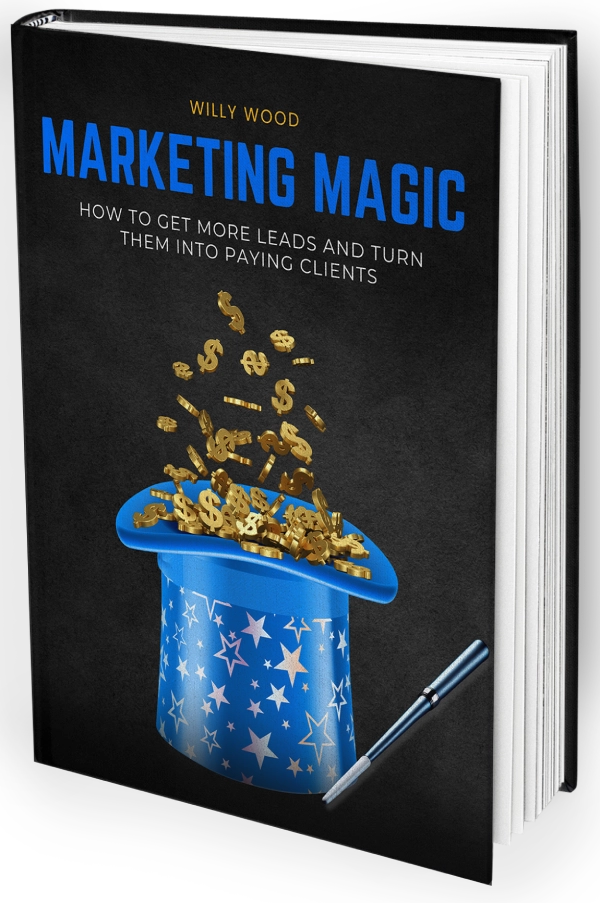Time management is a tricky business.
There are so many factors that go into managing one’s time, and everyone’s situation (and therefore everyone’s challenges) are a bit different.
That being said, there are some general challenges that everyone who is in charge of how to use his or her time has to deal with, and two of the biggest challenges we all face are prioritizing and procrastinating.
In today’s post, I take a look at how these two challenges intersect and describe one of the most effective time management strategies you can employ to get the most production out of your work time.
Prioritizing
There are a lot of time management experts out there, and you can find literally hundreds of books on the topic if you really want to dig, but no matter whose system you look at, one of the core principles will have to do with prioritizing (both prioritizing your goals for the long term, and prioritizing your day’s tasks prior to starting on them in the short term).
Stephen Covey’s time management “quadrant” matrix described in his landmark book The 7 Habits of Highly Effective People is one of the most popular. Covey divides tasks into four quadrants based on whether they are important (or not) and whether they are urgent (or not). Doing so gives us these four possibilities:
1. Things that are urgent but not important.
2. Things that are urgent and important.
3. Things that are not urgent but are important.
4. Things that are not urgent and also are not important.
Having divided up the possible tasks we could take on in a day this way, Covey advises us to get rid of those tasks that are not urgent and also not important (these waste our time) and to delay, delegate, or simply ignore those tasks that are urgent but not important.
That leaves us with two categories of tasks that should take up most of our time. One category is things that are not urgent but are important. These are our long-term growth activities such as reading in our field, taking training to improve our skills, etc.
These types of activities must absolutely be planned into your routine so that you don’t spend all of your time working on urgent matters, which could cause you ultimately to plateau in your career advancement. I recommend allotting 20% of your day to these long-term growth activities.
With that caveat, highly productive people develop the habit of focusing the majority of each workday (80%) on tasks that are both urgent and important. These tasks include, but are not limited to, communication (e-mail, phone calls, video calls) with customers, clients, partners, and suppliers; marketing (both content creation for inbound marketing and outbound marketing tasks); and completing paying work for which there is a deadline.
Now, let’s add one more element into the mix: whether or not you want to do a particular task—that is, the element of motivation.
When you introduce motivation (or lack of it) into the mix, you can then subdivide the urgent and important tasks on your to-do list into two categories:
1. Things you want to do and also need to do.
2. Things you don’t want to do, but nevertheless need to do.
And this is where procrastination enters the picture.
Procrastination
There are many reasons people procrastinate. Some people have trouble waking up and take a little longer to get rolling on their day’s tasks, so they like to “ease into” their workday. Some people claim that they “work better under pressure” and that’s why they put things off till the last minute.
But I think most people would agree with me that the most common reason for procrastination is the aversion to doing something we really don’t want to do. Everybody has experienced this situation before, and some people unfortunately have to deal with it regularly.
So, what to do about the situation? This is where the “frog” from our title comes in.
Mark Twain was quoted as saying that if the first thing you do each morning is to eat a live frog, you can go through the day with the satisfaction of knowing that that’s probably the worst thing that is going to happen to you all day long.
Time management guru Brian Tracy co-opted this quotation to create one of the best productivity tips ever, which he describes in his best-selling time management book, Eat That Frog!: 21 Great Ways to Stop Procrastinating and Get More Done in Less Time.
Tracy defines a “frog” as “your biggest, most important task, the one you are most likely to procrastinate on.”
Eat That Frog!: The King of Procrastination Solutions
Let’s break down the key aspects of Tracy’s “eat that frog” approach.
1. If You Have to Eat a Live Frog at All, It Doesn’t Pay to Sit and Look at it for Very Long—The truth is, if you turn your back on the frog and busy yourself doing something else, it’s still going to be sitting there when you decide to look at it again. In fact, it may look like it has doubled in size while you waited because now the deadline is that much closer and the pressure is that much higher.
As unpleasant as it might be, your best approach is to simply take a deep breath and tackle your frog first thing. You’ll probably find that, once you get going on the task, it won’t seem quite as bad as you thought it would be. I know that this has been my experience.
2. If You Have to Eat Two Frogs, Eat the Ugliest One First—There are several good reasons for approaching two big, undesirable tasks in this way.
First of all, the sense of satisfaction you gain from eating your biggest frog first is huge. This sense of accomplishment and pride (and let’s face it, relief) will make you feel better all day long.
Second, eating your biggest frog first gives you momentum. It’s so much easier taking on that second frog when you know that the one you just dispatched was a bigger one.
Finally, when you knock off your biggest task first thing, everything else on your to-do list looks small and insignificant in comparison. You’ll find yourself thinking, “Is that all? Piece of cake!”
3. Don’t Make Excuses—You remember those people I mentioned earlier who say that they like to “ease into” their day? That’s really just an excuse to put off the harder work till later. And you know what happens when “later” arrives? Oftentimes, they simply put the task off a little longer, if at all possible.
And what about those people who claim that they “work better under pressure?” First of all, I don’t believe them. In my experience (and this comes from someone who said this often when he was younger), these people actually don’t do better work when they’re under the gun. They just like to think they do.
The fact is, if they just went ahead and did the work well before the deadline, the work would be just as good (likely it would be better, as they would have time for revisions) and they would feel so much better without the deadline hanging over their heads like an ax about to fall.
Develop a “Positive Addiction” to Taking Action
The most important result you’ll achieve from making eating your frogs a habit has nothing to do with accomplishing those individual tasks. Sure, it’s great that you got those tasks completed, but the most important benefit will be the long-term change in you and your work habits.
Once you’ve eaten enough frogs and have found success with the approach, you’ll begin to actually look forward to the beginning of each day. You’ll start thinking, “What big, bad frog do I get to eat this morning? Bring it on!”
To use Brian Tracy’s words, you will have developed a “positive addiction” to taking action on your biggest challenges. As a result, you will get a great deal more work done than you’ve ever been able to accomplish before—and, in addition, you’ll feel unstoppable.
Don’t Let Frogs in Your House in the First Place
I’d like to make one final point before wrapping things up. Let’s step back in time to a point before that big, bad frog showed up on your list.
Now, ask yourself, “How did that frog get on my to-do list in the first place?”
The answer? You said, “Yes” to someone.
You took on a task that later turned out to be a frog. Now, you may not have recognized it as a frog when you accepted the job. If that’s the case, I give you a pass. We’ve all taken on jobs we thought were going to be great and due to some unforeseen or undisclosed factor(s), the job turned out to be a frog in disguise.
But you may also have taken on the task, knowing it was a frog from the beginning. Again, there might have been good reasons to accept the job anyway. You may have been short on cash and needed the gig. You may have had a hole in your work schedule and said, “Hey, it would be nice to plug that hole with a paycheck even though this looks like it won’t be much fun.”
I get it. Been there, done that.
But, I counsel you, when you recognize a task as a frog from the very beginning, whenever possible, just say, “No.” Turn it down. You don’t need that kind of stress in your life. And you’ll be so much happier if you spend more of your work time working on tasks that you enjoy and that energize you.
OK, that’s it for today’s post. I hope you’ve experienced an “Aha!” moment concerning prioritizing and procrastination. I’d love to hear from you about your experiences with time management, and with the “eat that frog” approach specifically, if you’ve tried it.
Just drop me a note in the comments box below.





